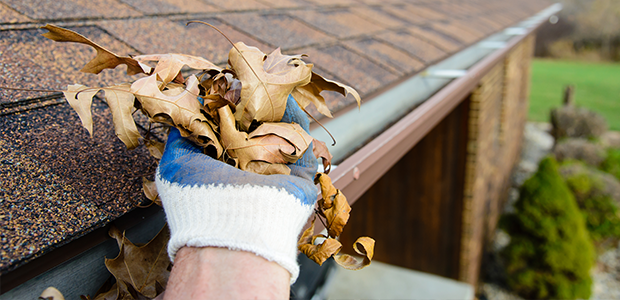
The basics of gutters are simple: soft landing and drainage. Most people understand this, but there are many homeowners who don’t manage their gutters properly because they don’t completely understand the basics. In this article, the basics of gutters are laid out simply so that hopefully maintaining them is likewise simple.
Guttering Basics
If your house didn’t have gutters, rain and snowmelt would pour off of your house and hammer the ground with great force. The concentrated effort rolling off the roofing shingles would carve a long line around your house like a fuse. This would rip up the soil, and even if you repaired your yard from the damage, you will still need to do it all over again on the next rain and the next. This is why homes have gutters.
Gutters are here to channel the water through gutters and downspouts and pour the runoff out slowly onto your lawn in designated areas. As a result, water runoff can glide onto the ground easily without forcefully damaging the soil. To be fair, if a great deal of rain falls, whether you have gutters or not, constant, heavy runoff will wear down your topsoil.
Types of Gutters
The standard square-edge gutter, also called the “box” style, has sharp, square edges, and is commonly used on a lot of commercial sites. The “ogee detail” gutter, also called “K-style,” resembles an exterior crown molding. It’s slightly more decorative, giving your home’s exterior a more finished look.
PVC Gutters: PVC, or vinyl, is a tough, maintenance-free, moderately priced popular with newer installations. Vinyl gutter systems are favored by some because they are lightweight and can be easily snapped or glued together. However, vinyl gutters are not recommended for hot, sunny climates where they tend to become brittle, crack and fail quickly.
Aluminum Gutters: Aluminum is a moderately priced and rust-resistant material popular with newer installations. It comes unfinished or factory-painted. The downside is that aluminum tends to leak at joints because the metal expands and contracts too much for sealant to hold permanently. It also dents easily.
Galvanized Gutters: Galvanized gutters are strong and inexpensive, although they can rust.
Copper Gutters: Copper is an expensive material that is strong, durable, rust-resistant and nearly maintenance-free. Copper gutters will weather green unless you coat it with a clear sealant. It also needs to be installed by a professional.
Gutter Downspouts & Gutter Problems
Whether it looks like it or not, your gutters are slanted just slightly so that the water can run in one direction toward the downspouts instead of having standing water in the gutters. If your gutters have not been properly attached to your roof or have not been properly maintained, water will stand. A gallon of water weighs more than 8 pounds, and if several gallons are allowed to stand in your guttering, this can be a tremendous amount of weight.
Guttering is typically fastened to the roof eaves by long nails. This construction holds the gutters to the roof laterally, but has a difficult time supporting vertical weight. This might seem like a bad idea, but if gutters were fastened so as to support more weight, and then they came down, they would likely take most of the eave and roof with them. So they are designed to hold a reasonable amount of weight, but beyond that amount they will come down.
Gutter Cleaning
Having your gutters cleaned regularly is not really a matter of cleaning to spruce up your gutters, but cleaning as maintenance. Leaves, twigs, and other debris can clog downspouts and general water flow, which will force water to stand. This is the most predominant cause of damage and gutters being pulled down. So have your gutters cleaned regularly, especially if you live in a heavily treed neighborhood where leaves can pile up fast.
Ready to start your Gutter Cleaning?
Find ProsGuttering Basics
Now that you know how your gutters are designed to function, you can better understand how to care for them and monitor their performance. If you can see the corners of your gutters leaking, then they are probably holding water for one reason or another. During and after heavy rains, keep an eye out on the corners of your gutters as a test to their integrity.
Gutters are very easy to maintain and monitor, but they can be expensive to replace, especially if they take part of the roof or eave with them when they go. So keep and eye out and you can save some money.
 Rubber Roofing – Benefits & Alternatives
Rubber Roofing – Benefits & Alternatives  Should You Layer Shingles on Your Roof?
Should You Layer Shingles on Your Roof?  Built Up Roof Basics
Built Up Roof Basics  Roofing Shingles Come in All Shapes and Sizes
Roofing Shingles Come in All Shapes and Sizes  Roofing and Gutters Glossary
Roofing and Gutters Glossary 

Are You Familiar With This Topic? Share Your Experience.